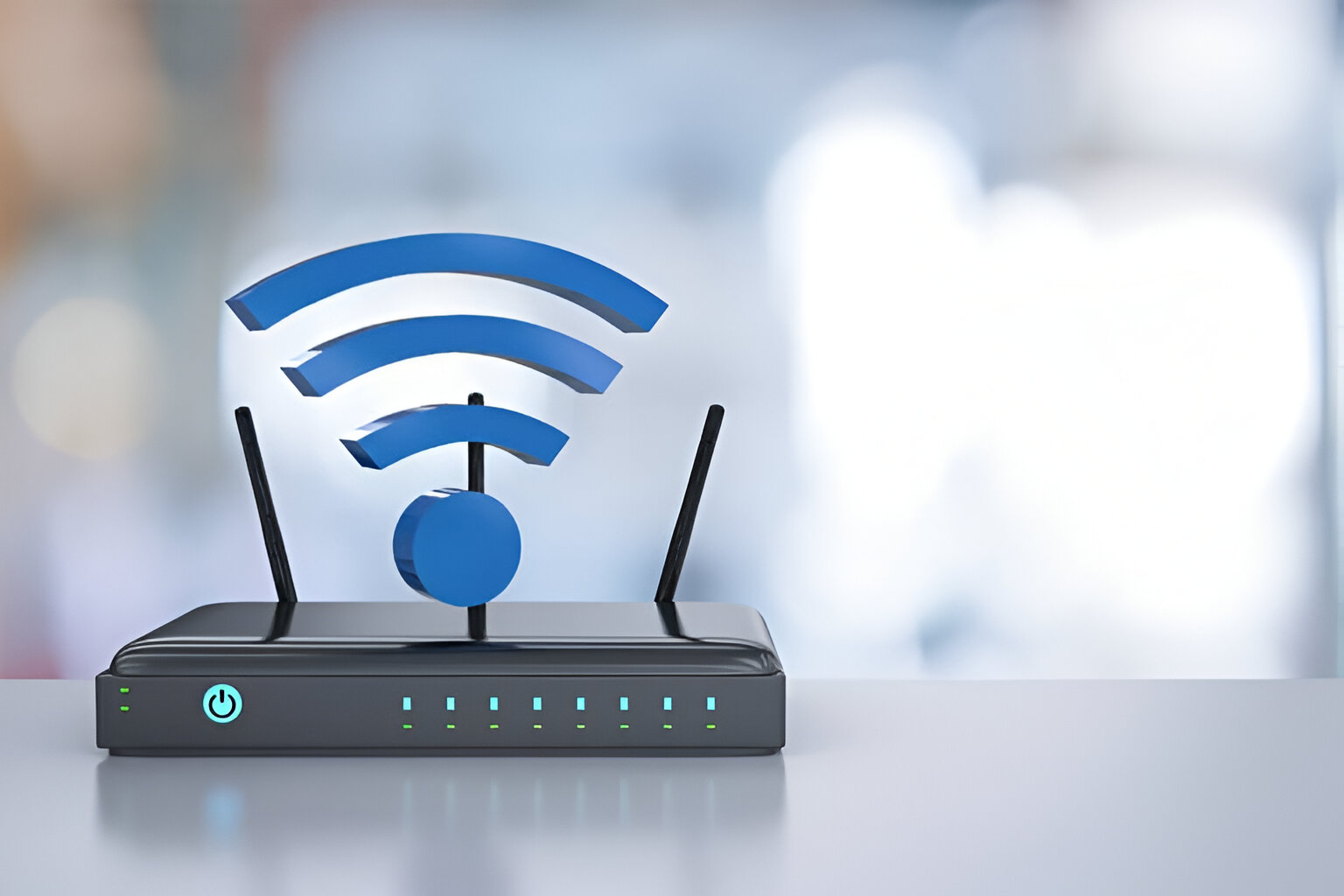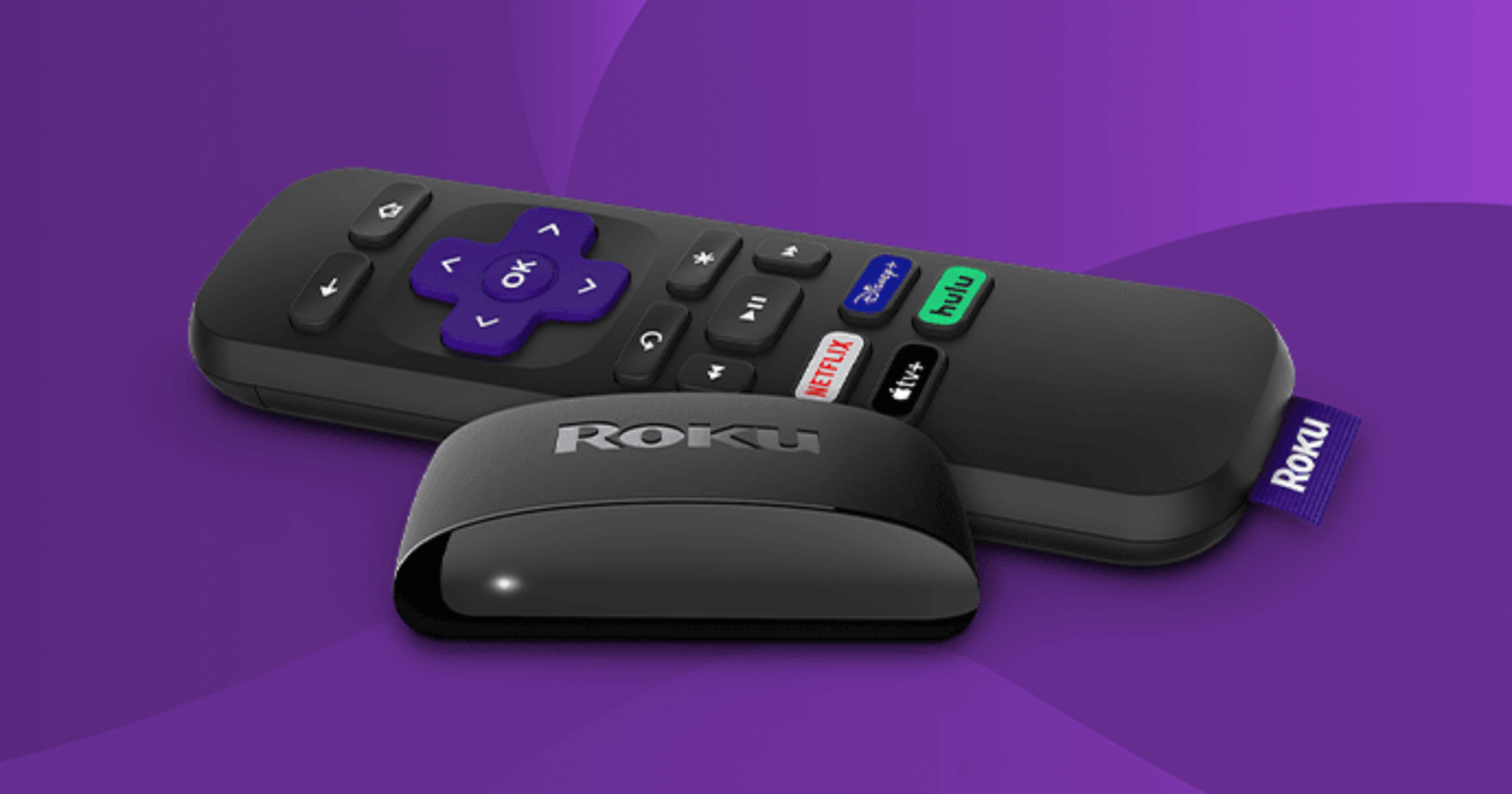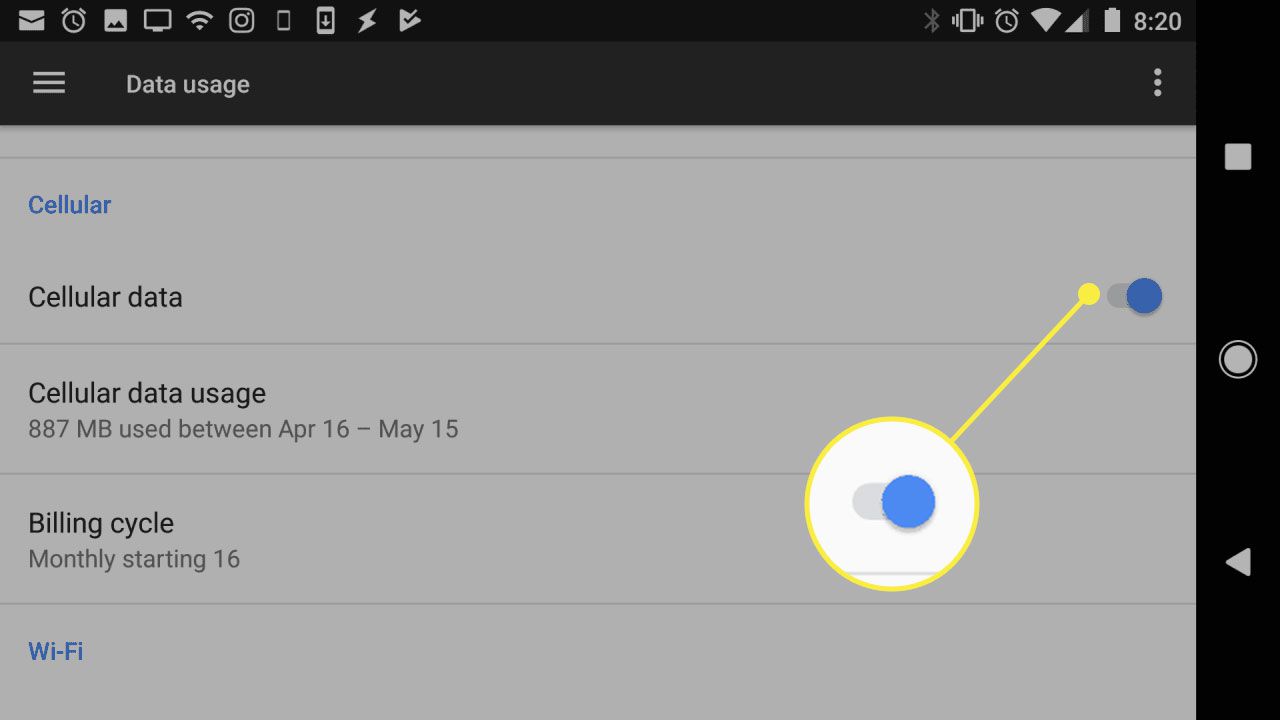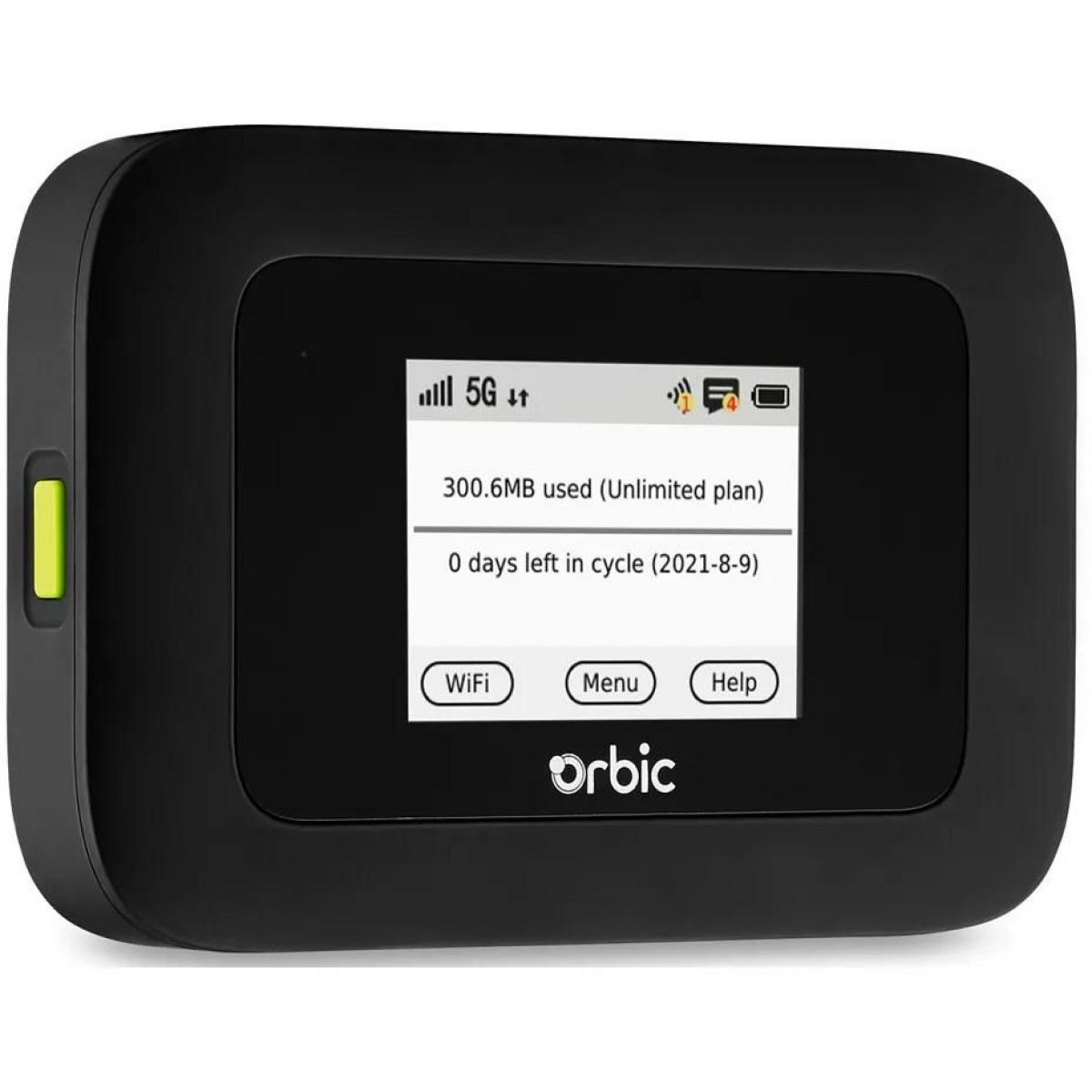Introduction
In today's fast-paced digital age, staying connected is more important than ever. Whether for work, leisure, or staying in touch with loved ones, having reliable internet access is a necessity. When it comes to accessing the internet on the go, two popular options stand out: hotspots and Wi-Fi. Understanding the differences between these two options is crucial for making informed decisions about which one best suits your needs.
Hotspots and Wi-Fi both provide wireless internet connectivity, but they operate in distinct ways and have unique advantages and limitations. By delving into the specifics of each option, you can gain a clearer understanding of their functionalities and determine which one aligns best with your requirements.
In this comprehensive guide, we will explore the intricacies of hotspots and Wi-Fi, highlighting their respective pros and cons. Additionally, we will delve into the factors to consider when choosing between these two connectivity solutions. By the end of this exploration, you will be equipped with the knowledge needed to make an informed decision about whether a hotspot or Wi-Fi is the better option for your specific circumstances.
Understanding Hotspot
A hotspot is a portable wireless network that provides internet access to devices within its vicinity. It can be created using a mobile device, such as a smartphone or a dedicated hotspot device. When activated, the hotspot emits a Wi-Fi signal, allowing nearby devices to connect to the internet through the cellular data network of the device hosting the hotspot.
Hotspots offer unparalleled convenience, as they enable users to access the internet from virtually anywhere with cellular coverage. Whether you're at a bustling airport, a serene park, or a remote location, as long as there is cellular reception, you can create a hotspot and connect your devices to the internet.
Moreover, hotspots are versatile, as they can support multiple devices simultaneously. This makes them ideal for situations where multiple users need internet access, such as during business meetings, group outings, or family gatherings. Additionally, hotspots are often equipped with security features, allowing users to set up passwords and encryption to safeguard their internet connection from unauthorized access.
One of the key advantages of hotspots is their portability. Whether you're a digital nomad, a frequent traveler, or someone who needs internet access on the go, the compact nature of hotspots makes them an indispensable tool for staying connected. Furthermore, hotspots eliminate the need to rely on public Wi-Fi networks, which can be unreliable or insecure, providing a more secure and stable internet connection.
However, it's important to note that the effectiveness of a hotspot is contingent on cellular coverage. In areas with poor reception or limited cellular infrastructure, the performance of a hotspot may be compromised. Additionally, excessive data usage through a hotspot can lead to additional charges from your cellular provider, making it essential to monitor data consumption when using this connectivity option.
In essence, hotspots offer unparalleled convenience, portability, and versatility, making them a valuable tool for accessing the internet on the go. Understanding the intricacies of hotspots is essential for harnessing their full potential and making informed decisions about when and how to utilize them for seamless internet connectivity.
Understanding Wi-Fi
Wi-Fi, short for Wireless Fidelity, has become an integral part of modern connectivity, providing wireless internet access in homes, businesses, public spaces, and educational institutions. Unlike hotspots, which rely on cellular data, Wi-Fi operates through wireless routers that are connected to a fixed broadband internet source, such as a cable or DSL modem. This network technology allows multiple devices, including smartphones, laptops, smart TVs, and smart home devices, to connect to the internet within the range of the Wi-Fi signal.
The ubiquity of Wi-Fi has transformed the way people access and utilize the internet, offering unparalleled convenience and flexibility. With a Wi-Fi network in place, users can enjoy high-speed internet access throughout their homes or offices, enabling seamless streaming, online gaming, video conferencing, and other bandwidth-intensive activities. Furthermore, Wi-Fi networks can be customized with unique network names (SSIDs) and secured with passwords and encryption protocols to ensure privacy and prevent unauthorized access.
One of the key advantages of Wi-Fi is its ability to provide reliable and high-speed internet connectivity to multiple devices simultaneously. This makes it an ideal solution for households, businesses, and public spaces where numerous users require internet access. Additionally, Wi-Fi networks can be extended using range extenders or mesh systems to cover larger areas, ensuring consistent connectivity across expansive environments.
While Wi-Fi networks offer exceptional convenience and flexibility, they are subject to certain limitations. The range of a Wi-Fi signal is influenced by various factors, including the type of router, the presence of physical obstructions, and interference from other electronic devices. As a result, areas located far from the router or obstructed by walls and floors may experience weaker Wi-Fi signals, leading to slower internet speeds and potential connectivity issues.
Moreover, Wi-Fi security is a critical consideration, as unsecured networks can be vulnerable to unauthorized access and potential security breaches. Implementing robust security measures, such as using strong passwords, enabling network encryption (e.g., WPA2 or WPA3), and regularly updating router firmware, is essential for safeguarding Wi-Fi networks against cyber threats.
In essence, Wi-Fi networks have revolutionized the way people access the internet, offering reliable, high-speed connectivity for a wide range of devices. Understanding the intricacies of Wi-Fi technology and its associated considerations is vital for optimizing network performance, enhancing security, and ensuring a seamless internet experience across various environments.
Pros and Cons of Hotspot
Hotspots offer a range of benefits, making them a popular choice for individuals and businesses seeking on-the-go internet connectivity. Understanding the advantages and limitations of hotspots is crucial for making informed decisions about their usage.
Pros of Hotspot
-
Portability: Hotspots are highly portable, allowing users to access the internet from virtually anywhere with cellular coverage. Whether you're traveling, attending outdoor events, or working remotely, the ability to create a Wi-Fi network on the go is invaluable.
-
Versatility: Hotspots support multiple devices simultaneously, making them ideal for scenarios where several users require internet access. This versatility is particularly beneficial during business meetings, group outings, or family gatherings, where seamless connectivity for multiple devices is essential.
-
Security: Hotspots often come equipped with security features, enabling users to set up passwords and encryption to protect their internet connection from unauthorized access. This added layer of security enhances privacy and safeguards sensitive data transmitted over the network.
-
Independence from Public Wi-Fi: By using a hotspot, users can avoid the potential risks associated with public Wi-Fi networks, such as unsecured connections and susceptibility to cyber threats. This independence provides a more secure and stable internet experience, especially in public settings.
-
Accessibility: Hotspots ensure internet accessibility in areas where traditional Wi-Fi networks may be unavailable or unreliable. This accessibility is particularly beneficial for individuals who frequently work or travel to remote locations with limited connectivity options.
Cons of Hotspot
-
Dependence on Cellular Coverage: The effectiveness of a hotspot is contingent on the availability of cellular coverage. In areas with poor reception or limited cellular infrastructure, the performance of a hotspot may be compromised, leading to connectivity issues and slower internet speeds.
-
Data Usage Limitations: Excessive data usage through a hotspot can result in additional charges from cellular providers. Users must monitor their data consumption to avoid unexpected fees and potential limitations on high-speed data after reaching certain thresholds.
-
Battery Drain: Creating a hotspot using a mobile device can drain its battery rapidly, especially if multiple devices are connected simultaneously. This can lead to shorter device battery life, necessitating the need for frequent recharging or the use of external power sources.
-
Limited Range: The range of a hotspot signal is limited compared to traditional Wi-Fi networks, making it less suitable for large physical spaces. Users located at a distance from the hotspot device may experience weaker signals and slower internet speeds.
Understanding the pros and cons of hotspots is essential for leveraging their benefits while mitigating their limitations, enabling users to make informed decisions about when and how to utilize this portable connectivity solution.
Pros and Cons of Wi-Fi
Wi-Fi networks have become an indispensable part of modern connectivity, offering a myriad of advantages while presenting certain limitations. Understanding the pros and cons of Wi-Fi is essential for optimizing its benefits and addressing its associated challenges.
Pros of Wi-Fi
-
Ubiquitous Connectivity: Wi-Fi networks provide ubiquitous internet connectivity, allowing users to access the internet from a wide range of devices, including smartphones, laptops, tablets, and smart home gadgets. This pervasive connectivity fosters seamless integration of digital technologies into various aspects of daily life, from entertainment and communication to productivity and education.
-
High-Speed Internet Access: Wi-Fi networks offer high-speed internet access, enabling users to engage in bandwidth-intensive activities such as streaming high-definition content, online gaming, and video conferencing. The ability to transmit and receive data at rapid speeds enhances the overall internet experience, facilitating smooth and uninterrupted online interactions.
-
Multi-Device Support: Wi-Fi networks support multiple devices simultaneously, making them ideal for households, businesses, and public spaces where numerous users require internet access. This multi-device support fosters connectivity for diverse technological ecosystems, empowering users to leverage a wide array of internet-enabled devices in their environments.
-
Customization and Security: Wi-Fi networks can be customized with unique network names (SSIDs) and secured with passwords and encryption protocols, ensuring privacy and preventing unauthorized access. Implementing robust security measures, such as WPA2 or WPA3 encryption, enhances the protection of sensitive data transmitted over the network, safeguarding users against potential cyber threats.
-
Scalability and Flexibility: Wi-Fi networks can be extended using range extenders or mesh systems to cover larger areas, ensuring consistent connectivity across expansive environments. This scalability and flexibility enable users to tailor their Wi-Fi networks to suit the specific layout and requirements of their homes, offices, or public venues.
Cons of Wi-Fi
-
Range Limitations: The range of a Wi-Fi signal is influenced by various factors, including the type of router, physical obstructions, and interference from other electronic devices. Areas located far from the router or obstructed by walls and floors may experience weaker Wi-Fi signals, leading to slower internet speeds and potential connectivity issues.
-
Interference and Signal Degradation: Wi-Fi signals can be susceptible to interference from electronic devices, neighboring networks, and physical barriers, leading to signal degradation and reduced network performance. Overcrowded Wi-Fi channels in densely populated areas can exacerbate signal interference, affecting the overall quality of the wireless connection.
-
Security Vulnerabilities: Unsecured Wi-Fi networks are vulnerable to unauthorized access and potential security breaches, posing risks to sensitive data and privacy. Failure to implement robust security measures, such as using strong passwords and encryption, can expose Wi-Fi networks to cyber threats, compromising the integrity of transmitted information.
-
Network Congestion: In densely populated areas or environments with a high concentration of connected devices, Wi-Fi networks may experience network congestion, leading to slower internet speeds and diminished network performance. This congestion can impact the overall user experience, particularly during peak usage periods.
-
Maintenance and Upkeep: Maintaining a Wi-Fi network involves regular firmware updates, security enhancements, and troubleshooting potential connectivity issues. Without proper maintenance, Wi-Fi networks may experience performance degradation and security vulnerabilities, necessitating proactive management and oversight.
Understanding the intricacies of Wi-Fi networks, including their advantages and challenges, is crucial for harnessing their full potential while addressing their associated limitations. By leveraging the strengths of Wi-Fi and implementing effective strategies to mitigate its drawbacks, users can optimize their wireless connectivity and enjoy a seamless internet experience across various environments.
Factors to Consider When Choosing Between Hotspot and Wi-Fi
When deliberating between a hotspot and Wi-Fi for internet connectivity, several crucial factors come into play, influencing the suitability of each option based on specific needs and circumstances.
Coverage and Mobility
Hotspots provide internet access through cellular data, offering mobility and the ability to establish a network connection in diverse locations. However, the effectiveness of a hotspot is contingent on cellular coverage, making it less reliable in areas with limited reception. On the other hand, Wi-Fi networks, typically established within fixed locations, offer consistent coverage within a specified range, making them ideal for homes, offices, and public spaces with reliable internet infrastructure.
Device Compatibility and Simultaneous Connections
When considering the number and types of devices requiring internet access, the versatility of hotspots in supporting simultaneous connections becomes a crucial factor. Hotspots can accommodate multiple devices, making them suitable for scenarios involving diverse technological ecosystems or group settings. Conversely, Wi-Fi networks are designed to support numerous devices within their range, making them well-suited for environments where multiple devices require seamless connectivity.
Security and Privacy
The security of internet connectivity is paramount, particularly when transmitting sensitive data or accessing confidential information. Hotspots, when appropriately configured, can offer security features such as encryption and password protection. However, the use of public hotspots may pose security risks due to potential unauthorized access. Wi-Fi networks, when secured with robust encryption protocols and strong passwords, provide a higher level of control and privacy, making them a preferred choice for safeguarding sensitive data and communications.
Data Usage and Cost Considerations
Understanding data usage requirements and associated costs is essential when evaluating connectivity options. Hotspots rely on cellular data plans, and excessive usage may result in additional charges, making it crucial to monitor data consumption. In contrast, Wi-Fi networks, typically connected to fixed broadband sources, may offer more predictable costs and higher data allowances, making them favorable for environments with consistent internet usage patterns.
Environmental Considerations
The physical environment and intended usage scenarios play a significant role in determining the most suitable connectivity option. Hotspots excel in providing internet access on the go, making them ideal for travel, outdoor activities, and remote work settings. Wi-Fi networks, with their stable coverage and scalability, are better suited for stationary environments such as homes, offices, and public venues, where consistent and reliable connectivity is paramount.
Flexibility and Adaptability
The adaptability of each connectivity option to dynamic usage scenarios and evolving needs is a critical consideration. Hotspots offer unparalleled flexibility, allowing users to establish internet connectivity in diverse locations, making them indispensable for individuals with mobile lifestyles. Wi-Fi networks, while less mobile, provide greater adaptability for long-term usage in fixed locations, offering stability and consistent performance over time.
By carefully assessing these factors, individuals and businesses can make informed decisions when choosing between hotspots and Wi-Fi, ensuring that their internet connectivity aligns with their specific requirements and usage scenarios.
Conclusion
In the dynamic landscape of internet connectivity, the choice between hotspots and Wi-Fi hinges on a multitude of factors, each bearing significance in different usage scenarios. Both options offer unique advantages and limitations, catering to diverse needs and preferences.
Hotspots, characterized by their portability, versatility, and independence from traditional Wi-Fi networks, serve as a reliable solution for individuals and businesses seeking on-the-go internet access. Their ability to create a wireless network in virtually any location with cellular coverage makes them invaluable for travel, remote work, and group settings. However, the dependence on cellular coverage, potential data usage limitations, and the need for diligent security measures underscore the importance of strategic usage and management.
On the other hand, Wi-Fi networks, with their ubiquity, high-speed connectivity, and multi-device support, have become indispensable in homes, businesses, and public spaces. Their scalability, customization options, and consistent coverage make them ideal for stationary environments, fostering seamless integration of digital technologies into various aspects of daily life. Nevertheless, challenges such as range limitations, security vulnerabilities, and network maintenance underscore the need for proactive management and security measures.
When making the decision between hotspots and Wi-Fi, individuals and businesses must carefully evaluate factors such as coverage and mobility requirements, device compatibility, security considerations, data usage patterns, environmental contexts, and adaptability to dynamic usage scenarios. By aligning the specific needs and priorities with the inherent strengths of each connectivity option, users can optimize their internet experience and ensure seamless connectivity across diverse settings.
Ultimately, the choice between hotspots and Wi-Fi is not a binary decision but rather a strategic consideration that necessitates a nuanced understanding of the unique benefits and challenges associated with each option. By leveraging the strengths of hotspots for on-the-go connectivity and harnessing the stability and scalability of Wi-Fi networks for stationary environments, users can tailor their internet connectivity to suit their individual lifestyles and requirements.
In conclusion, the decision between hotspots and Wi-Fi is not merely a matter of preference but a strategic choice that demands thoughtful consideration of specific usage contexts, mobility requirements, security considerations, and long-term adaptability. By embracing the distinct advantages of each option and mitigating their respective limitations, users can empower themselves with seamless and reliable internet connectivity tailored to their unique needs and preferences.

























